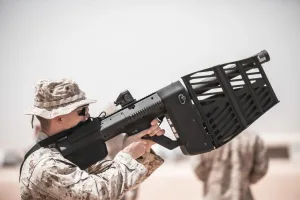Introduction: The Convergence of Manufacturing and Emerging Threats
The widespread availability and sophistication of unmanned aerial systems (UAS) have introduced new challenges across defense, infrastructure protection, and national security sectors. In response, the development of Counter-UAS (C-UAS) technology has accelerated, requiring not just advanced software and sensor design, but also specialized hardware components that can withstand demanding environments and evolving operational requirements.
At the heart of many C-UAS platforms are highly engineered physical components — including custom electromagnetic coils and precision-machined mechanical parts — that make real-time detection, tracking, and interdiction possible.
The Increasing Hardware Demands of Modern C-UAS Systems
Most C-UAS platforms today rely on a layered approach that incorporates a mix of sensors (radar, EO/IR, RF), electronic warfare systems, and kinetic or non-kinetic defeat mechanisms. Each layer brings unique performance and integration requirements that affect hardware design and manufacturing.
Custom coils and CNC-machined components support these systems in several key ways:
-
Signal generation and processing: Coils are central to radar and RF-based detection systems, often requiring high-frequency performance, low inductance, and tight electromagnetic shielding.
-
Mechanical reliability: CNC-machined parts are used for structural integrity, thermal management, and mounting — often under weight, vibration, and durability constraints.
-
Rapid adaptability: As C-UAS technology evolves rapidly, especially in response to asymmetric threats, hardware must be prototyped and iterated quickly, requiring short lead times and flexible design support.
Custom Coils: Enabling Electromagnetic Performance
Electromagnetic components such as coils play a foundational role in many C-UAS technologies:
-
Radar systems use coils in both transmission and reception paths, where frequency stability and low signal distortion are essential.
-
RF jamming and spoofing devices rely on inductors and transformers designed for broadband operation under thermal stress.
-
EMI shielding and isolation are increasingly important as C-UAS systems become more compact and multi-functional.
These applications often demand non-standard geometries, performance beyond off-the-shelf components, and design collaboration between engineers and manufacturing partners. Material selection, winding technique, and insulation design all contribute to achieving the necessary electromagnetic performance.
CNC Machining: Precision for Harsh Environments
C-UAS platforms must often operate in rugged, mobile, or rapidly deployable configurations — from vehicle-mounted systems to man-portable units. CNC machining supports this by enabling:
-
Precision fitment of housings, brackets, and supports that align with electronics, optics, or thermal control systems.
-
Use of lightweight and high-strength materials, including aluminum, stainless steel, and engineered polymers.
-
Integration with heat dissipation elements, gimbals, and sensor enclosures requiring micron-level tolerances.
Moreover, modular C-UAS platforms benefit from CNC machining’s ability to repeatably produce parts with exacting standards, especially in low- to mid-volume production environments where agility is critical.
Supply Chain Diversification and the Need for Domestic Responsiveness
As strategic focus turns toward reducing dependency on global supply chains for critical technologies, hardware production — especially for defense-related applications — is undergoing a shift. Custom coils and CNC-machined parts are increasingly sourced from diversified, domestic suppliers who can provide:
-
Faster turnaround in response to urgent field needs
-
Collaborative design support for early-stage development
-
Smaller batch production that suits prototype or special mission hardware
This move supports both operational resilience and the national objective of maintaining secure, responsive industrial capacity for emerging threats.
Conclusion: Why Manufacturing Matters in Counter-UAS Technology
While software, sensors, and networking often headline C-UAS discussions, the underlying hardware — from electromagnetic coils to machined components — plays an equally vital role. As threats continue to evolve, so must the precision and agility of the manufacturing base that supports detection, tracking, and interdiction systems.
By understanding how these foundational components function within the broader C-UAS ecosystem, stakeholders across defense, engineering, and procurement can better plan, design, and deploy solutions that are not only effective but also sustainable and resilient in the face of emerging threats.


